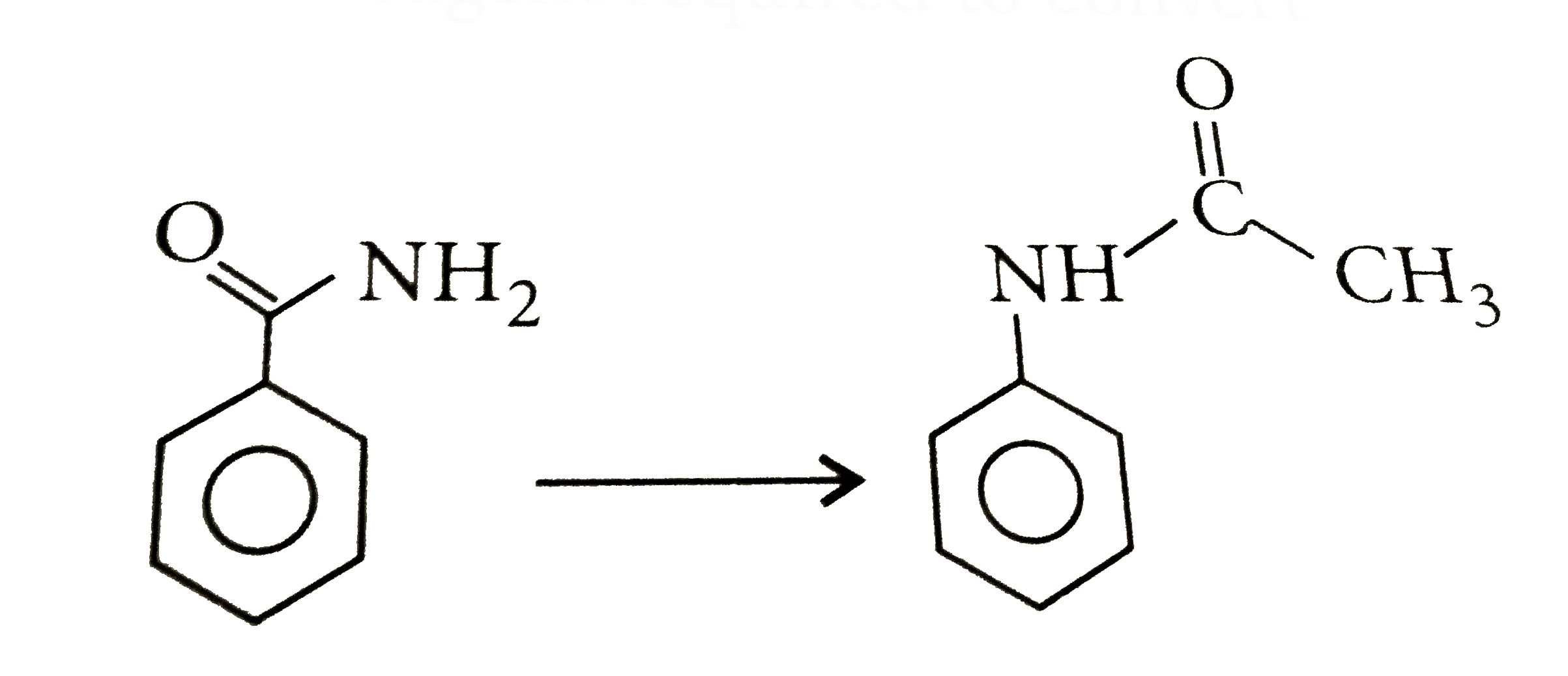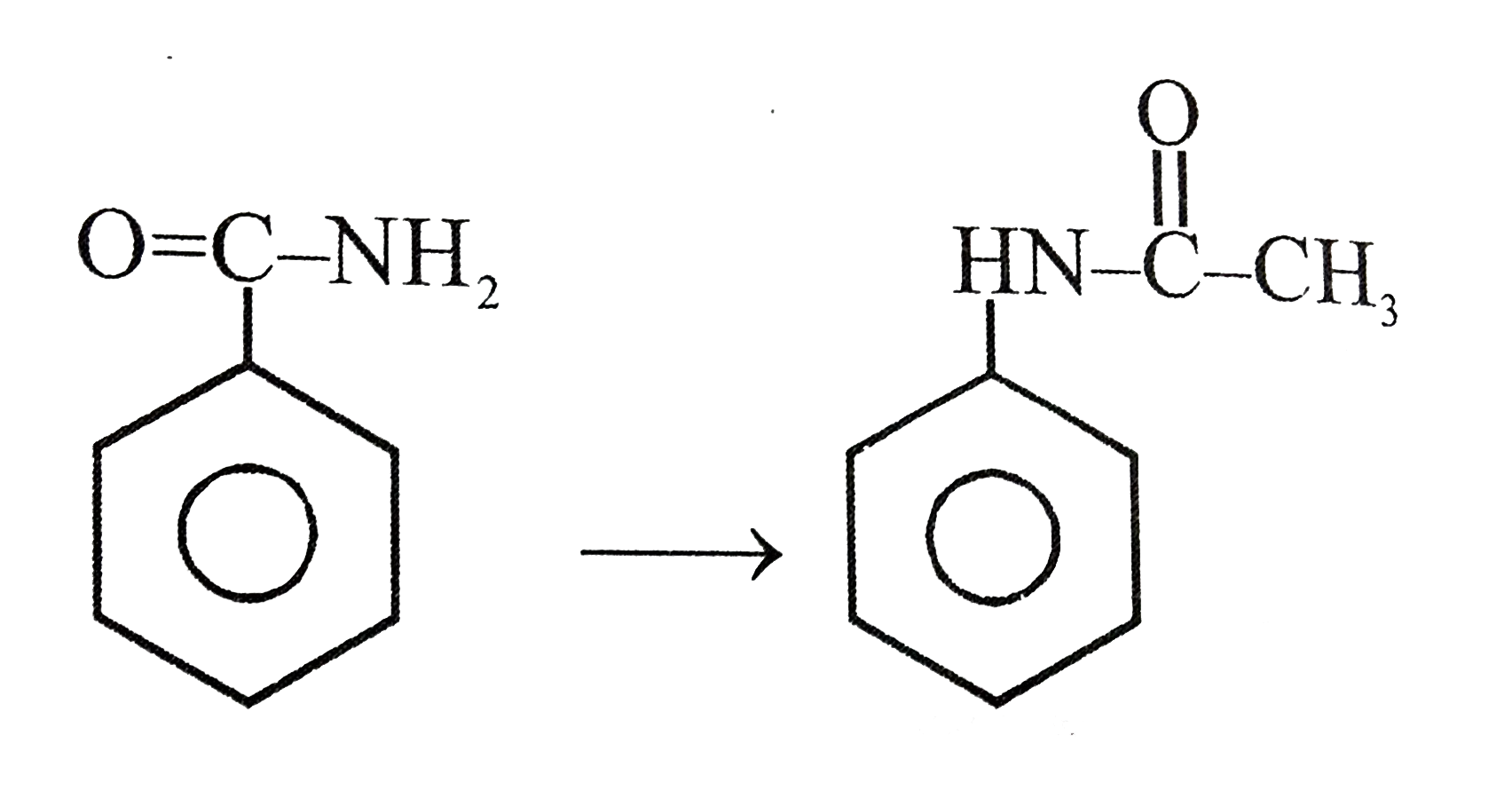Name the reagent used to convert bromoethane to ethoxyethane or diethyl ether.
To convert bromoethane to ethoxyethane (diethyl ether), we can follow these steps:
1. Identify the Reactants and Products:
- The starting material is bromoethane (C2H5Br).
- The desired product is ethoxyethane (C2H5OC2H5), also known as diethyl ether.
2. Understand the Mechanism:
- Bromoethane contains a bromine atom that is a good leaving group due to its electronegativity. The carbon atom bonded to bromine is electron-deficient (partially positive).
- Ethoxyethane is formed when two ethyl groups are connected by an oxygen atom.
3. Choose the Reagent:
- To convert bromoethane to ethoxyethane, we need a nucleophile that can attack the electron-deficient carbon of bromoethane.
- Sodium ethoxide (C2H5O^-Na^+) is a strong nucleophile and is suitable for this reaction.
4. Reaction Process:
- When bromoethane is treated with sodium ethoxide, the ethoxide ion (C2H5O^-) attacks the carbon atom bonded to bromine.
- This results in the displacement of the bromine atom (Br^-), forming ethoxyethane and sodium bromide (NaBr) as a byproduct.
5. Final Reaction Equation:
- The overall reaction can be represented as:
C2H5Br+C2H5O−Na+→C2H5OC2H5+NaBr
6. Conclusion:
- The reagent used to convert bromoethane to ethoxyethane (diethyl ether) is sodium ethoxide.
- The starting material is bromoethane (C2H5Br).
- The desired product is ethoxyethane (C2H5OC2H5), also known as diethyl ether.
- Bromoethane contains a bromine atom that is a good leaving group due to its electronegativity. The carbon atom bonded to bromine is electron-deficient (partially positive).
- Ethoxyethane is formed when two ethyl groups are connected by an oxygen atom.
- To convert bromoethane to ethoxyethane, we need a nucleophile that can attack the electron-deficient carbon of bromoethane.
- Sodium ethoxide (C2H5O^-Na^+) is a strong nucleophile and is suitable for this reaction.
- When bromoethane is treated with sodium ethoxide, the ethoxide ion (C2H5O^-) attacks the carbon atom bonded to bromine.
- This results in the displacement of the bromine atom (Br^-), forming ethoxyethane and sodium bromide (NaBr) as a byproduct.
- The overall reaction can be represented as:
C2H5Br+C2H5O−Na+→C2H5OC2H5+NaBr
- The reagent used to convert bromoethane to ethoxyethane (diethyl ether) is sodium ethoxide.
Topper's Solved these Questions
- BOOK - ICSECHAPTER - ALCOHOLS, PHENOLS AND ETHERS EXERCISE - EXERCISE (PART-II Descriptive Questions) (SHORT ANSWER QUESTIONS)116videos
ALCOHOLS, PHENOLS AND ETHERS
- BOOK - ICSECHAPTER - ALCOHOLS, PHENOLS AND ETHERS EXERCISE - EXERCISE (PART-II Descriptive Questions) (LONG ANSWER QUESTIONS)20videos
ALCOHOLS, PHENOLS AND ETHERS
- BOOK - ICSECHAPTER - ALCOHOLS, PHENOLS AND ETHERS EXERCISE - EXERCISE (PART-I Objective Questions) (Correct the following statements)15videos
ALCOHOLS, PHENOLS AND ETHERS
- BOOK - ICSECHAPTER - ALCOHOLS , PHENOLS AND ETHERS EXERCISE - SOURCE BASED QUESTIONS4videos
ALCOHOLS , PHENOLS AND ETHERS
- BOOK - ICSECHAPTER - ALDEHYDES, KETONES AND CARBOXYLIC ACIDSEXERCISE - EXERCISE (PART-II DESCRIPTIVE QUESTIONS) ( LONG ANSWER QUESTIONS)478videos
ALDEHYDES, KETONES AND CARBOXYLIC ACIDS
Similar Questions
The reagents used to convert
 View Solution
View SolutionThe reagent required to convert
 View Solution
View SolutionThe reagents needed to convert :
 View Solution
View SolutionName one reagent used to convert toluene into benzaldehyde.
View SolutionName one reagent used to convert toluene into benzaldehyde.
View SolutionName one reagent used to convert toluene into benzaldehyde.
View Solution
Which reagent (X) is used to convert I to IIView SolutionEnlist the important uses of diethyl ether.
View SolutionThe reagent needed for converting
 is : View Solution
is : View SolutionHow will you convert ethyl bromide into ethoxyethane.
View Solution

